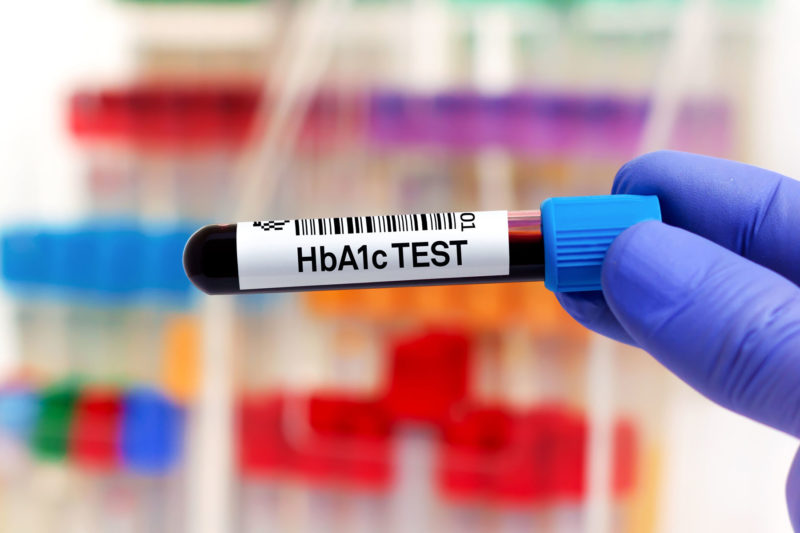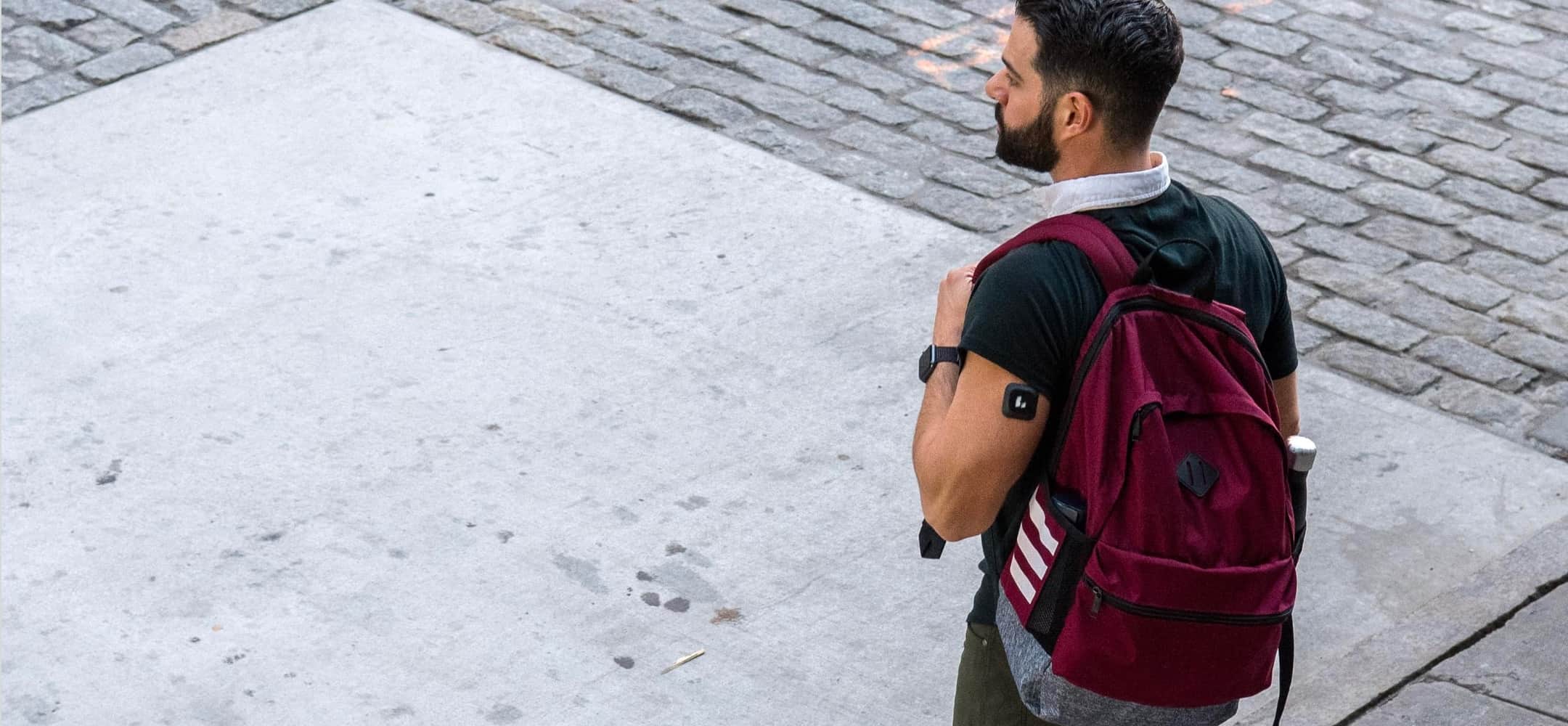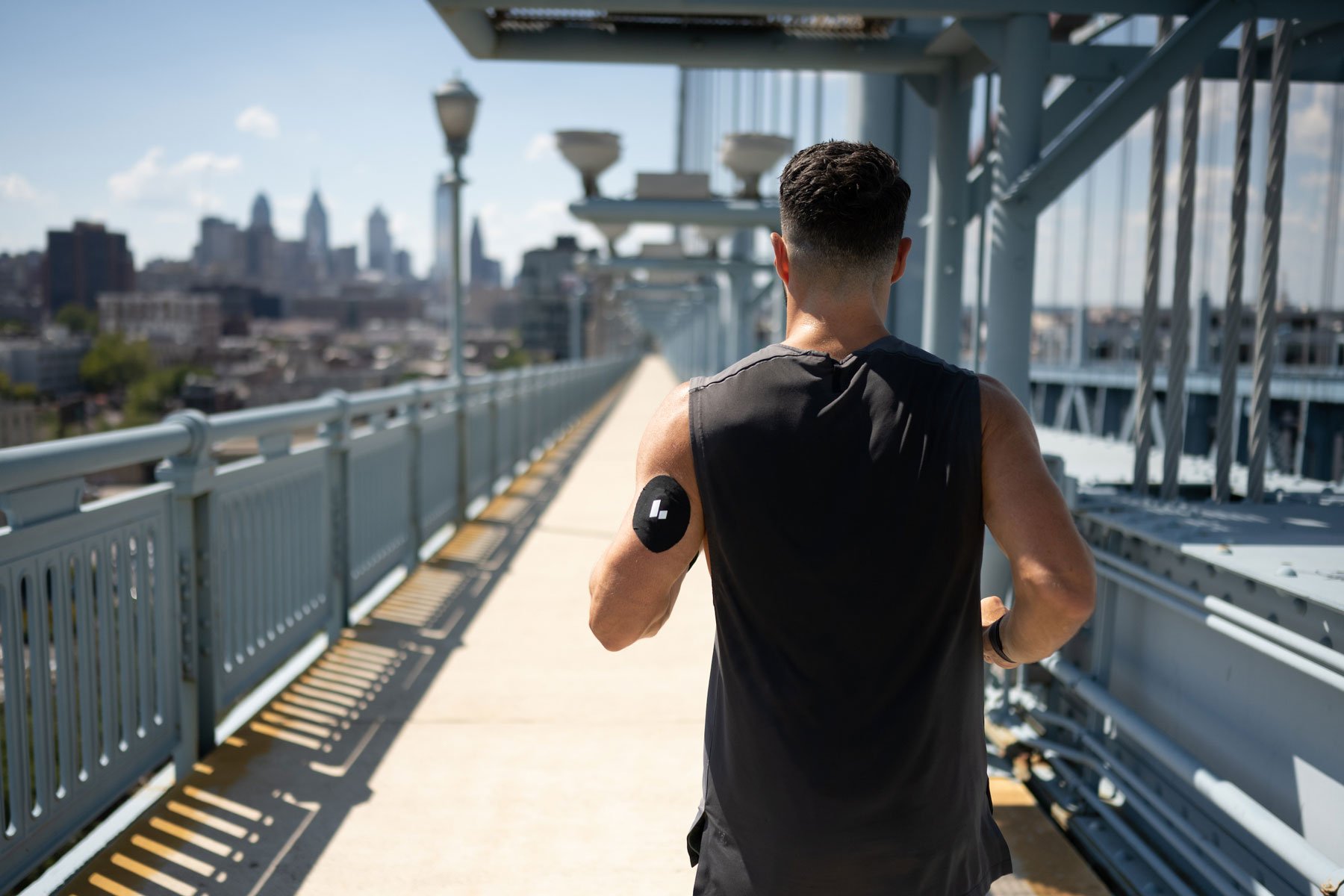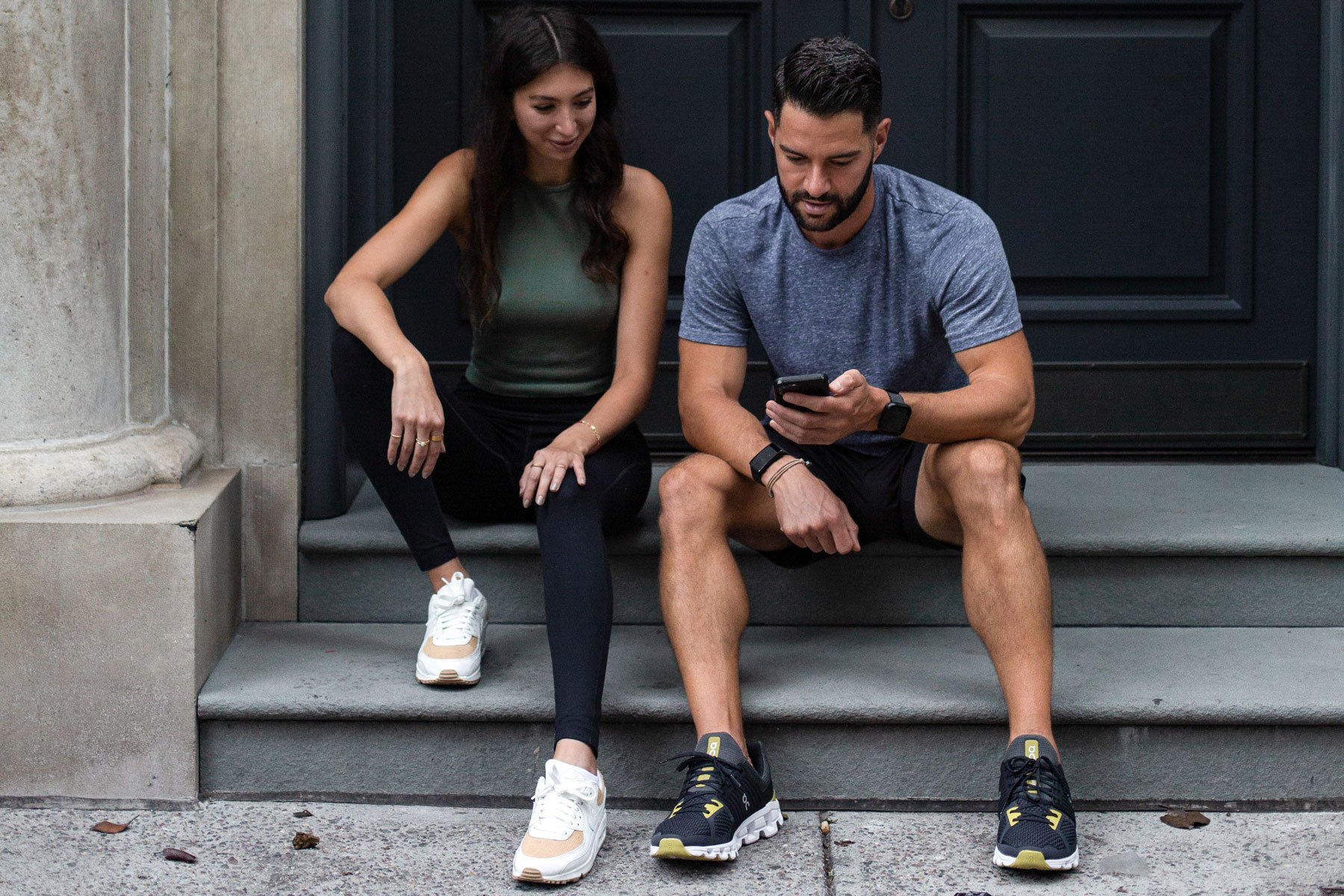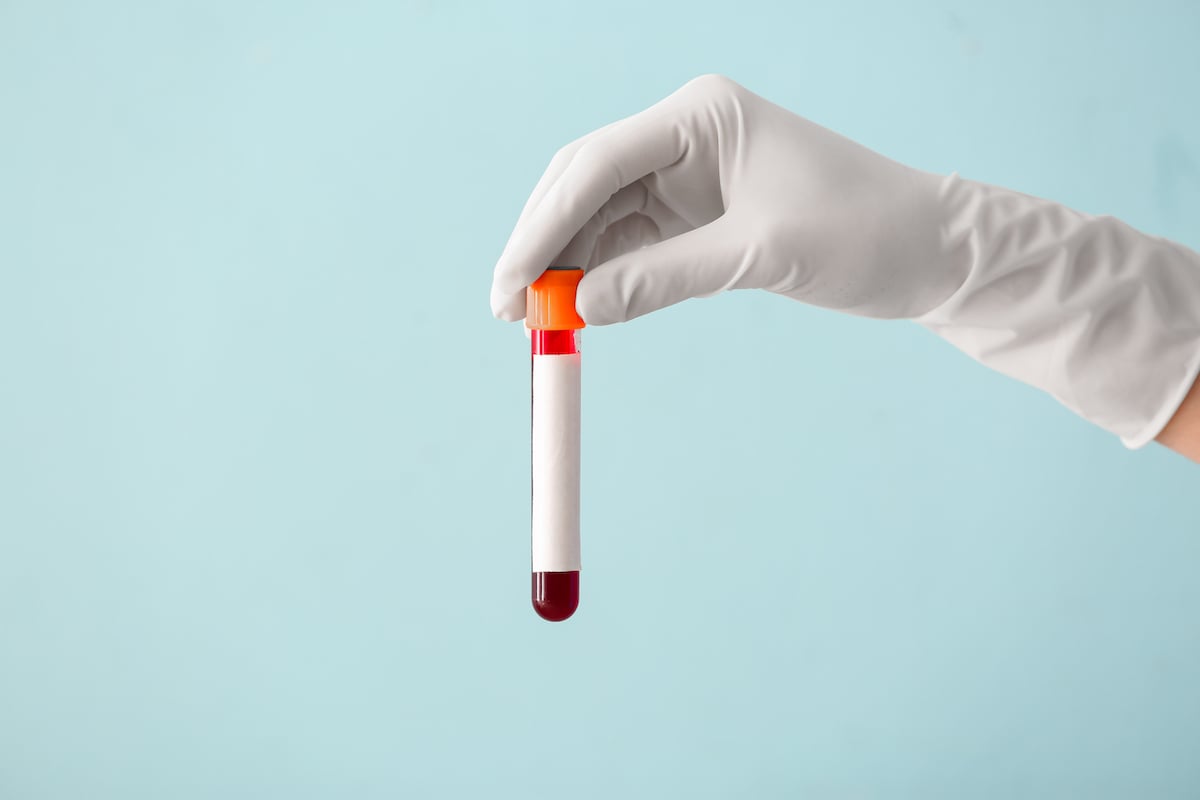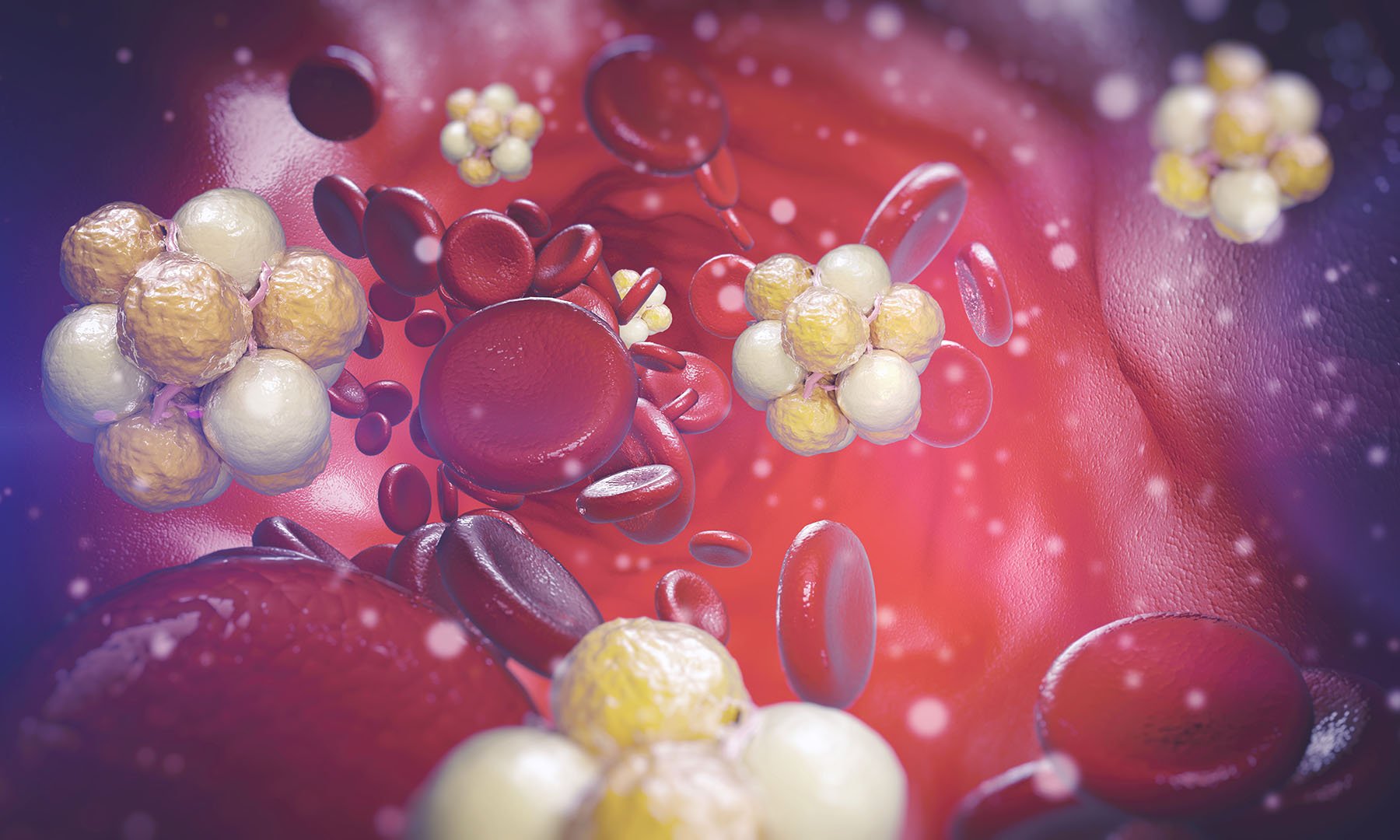The HbA1c test measures your average blood sugar over the past three months. It is a simple blood test frequently used to screen for and diagnose diabetes and monitor treatment.
HbA1c (also known as A1c) was first discovered in the late 1960s by researchers studying human hemoglobin A (HbA)—an iron-containing oxygen-carrying protein found in red blood cells. They noticed that HbA sometimes appeared in alternate forms, which the researchers designated HbA1a, HbA1b, HbA1c, and so on. These hemoglobin variants had different physical and chemical properties from normal hemoglobin, raising questions about their biological purpose.
By the late 1970s, researchers focused on HbA1c determined that it was formed by glycation—the chemical bonding of a glucose molecule to HbA. People with higher blood glucose levels (such as people with diabetes) were found to have higher levels of HbA1c. Excitement began to build around HbA1c as a marker of high blood sugar because people with higher HbA1c levels developed earlier and more severe diabetic complications. This suggested that doctors could use HbA1c to track how effectively people with diabetes control their blood glucose.
But it wasn’t until the landmark Diabetes Control and Complications Trial (DCCT) that HbA1c was firmly established as an important primary biomarker for diabetes management. The study, which ran from 1983 to 1993, followed 1,441 people with Type 1 diabetes. Participants were given either conventional therapy (one daily blood glucose measurement and 1-2 daily insulin injections) or intensive therapy (4+ daily blood glucose measurements and 3+ daily insulin injections or the use of an insulin pump). People in the intensive therapy group ultimately had lower HbA1c levels (indicating better blood glucose control) and lower rates of microvascular (small blood vessel) complications, such as retinopathy (eye damage that can cause vision loss), nephropathy (kidney damage that can lead to dialysis), and neuropathy (peripheral nerve damage that can lead to amputation).
After affirming the clinical importance of HbA1c testing, researchers faced a new challenge: standardization. By the early 1990s, it had become clear that test results varied significantly between different laboratories and countries. This inconsistency was due to the wide range of chemical techniques used to measure HbA1c—each of which defined the chemical target differently and suffered from unique error types. Laboratories and manufacturers also lacked a primary reference material (i.e., a pure sample of HbA1c to calibrate tests and machinery).
To solve this problem, two groups—the newly-formed National Glycohemoglobin Standardization Program and a working group at the International Federation of Clinical Chemistry and Laboratory Medicine—spearheaded a collaborative, multinational effort. These efforts (which unfolded over the next two decades) were successful, leading to the worldwide harmonization and standardization of HbA1c tests.
Today, clinicians use HbA1c (in combination with other tests) to diagnose diabetes and prediabetes and to monitor blood glucose management in people with diabetes.
What does HbA1c Measure?
The HbA1c test measures glycated hemoglobin in your bloodstream. In the US, Canada, and Japan, you’ll see this number as a percentage. For instance, an HbA1c test result of 5% would mean that 5% of the HbA molecules in your body have a glucose molecule bonded (or glycated) at Amino Acid #1.
Glycation, also known as the Maillard or the caramelization or “browning” reaction, occurs normally. It serves no biological purpose otherwise; it is simply a chance reaction between glucose and proteins in your body. It occurs in every organ, every day. It doesn’t need an enzyme or energy to occur. It’s also called the “aging” reaction—the reason you develop wrinkles and cataracts. Hemoglobin is made of four chains of amino acids folded together in a complex shape. When glucose encounters one of these chains ending with the amino acid valine, the two molecules form an irreversible covalent bond. Also, every time this Maillard reaction occurs, an oxygen radical (like hydrogen peroxide) is formed, which can cause cellular damage if not captured and detoxified by an anti-oxidant, such as Vitamin C or glutathione. Over time, these oxygen radicals (termed “oxidative stress”) can cause whole organs to fail.
The more glucose you have in your bloodstream, the more frequently these bonds occur and the higher your HbA1c level. But there is an upper limit on how high your HbA1c level can rise because your body constantly replaces red blood cells, which typically live for around 120 days. At that point, they are filtered by the spleen and broken down (along with any HbA1c they contain).
This 120-day lifespan (and the fact that glycation is a relatively slow chemical reaction) means that HbA1c levels act as a long-term biomarker for blood glucose levels. Unlike direct measurements of blood glucose (which can vary widely from minute to minute, hour to hour, and day to day), HbA1c levels reflect your average glucose levels over a three-month timeframe.
Why Would I Get HbA1c Tested?
Doctors generally test HbA1c for three reasons:
- Diabetes screening. The American Diabetes Association recommends that all people aged 45 and older get an HbA1c test, even if they have no symptoms or risk factors for diabetes.
- Diabetes diagnosis. If you already have symptoms of diabetes or other risk factors (e.g., high blood pressure or first-degree relatives with diabetes), your doctor may use an HbA1c test to make an official diagnosis.
- Diabetes management. If you have been diagnosed with diabetes, your healthcare provider may use periodic HbA1c tests to gauge how well you control your blood sugar.
In each case, the HbA1c level infers your average blood glucose over the prior three months. This result provides important information that alternative tests can’t. For instance, a fasting plasma glucose test (which requires patients to fast for 8-10 hours before the blood draw) only reflects your blood sugar at a single moment. Researchers have argued that these “snapshot” tests, even when performed twice, are less reliable than the HbA1c test in diagnosing chronically elevated blood glucose levels. This is partly due to “acute perturbations” — factors like stress, smoking, and diet that can influence a simple blood glucose reading on the day of your test.
The same is true of the oral glucose tolerance test (OGTT). In this test, you drink a large, sugary beverage. After a two-hour wait, doctors measure your blood glucose to see how effectively your body has cleared that glucose from the bloodstream. A healthy person’s blood glucose levels will spike at 30-60 minutes, followed by a fairly prompt decline by 120 minutes. In a person with insulin resistance or diabetes, however, blood glucose levels will remain high for an extended period. Like the fasting plasma glucose (FPG) test, this is a “snapshot” test that can be impacted by stress, sleep, and eating before the test, as well as the rate at which your stomach empties and your level of physical activity level in the preceding days.
The FPG and OGTT tests can also be swayed by laboratory errors that don’t affect HbA1c tests. Furthermore, they require 8-14 hours of fasting before the test (an instruction that some people may not successfully follow). For all these reasons, the HbA1c test is more reproducible than the FPG or the OGTT. If a person takes the HbA1c test twice, their results will likely be fairly close. If the same person takes an FPG or an OGTT, their results are less likely to match. For now, the OGTT is still considered the “gold standard” of diabetes diagnosis—but there is debate around this point.
Some authors argue that HbA1c is generally a more reliable indicator of chronic blood glucose elevation. Some recent research supports this view, such as a 2017 study of 3326 people in Singapore, which found that the HbA1c test outperformed the OGTT in classifying people with diabetes. Another study of 200 people in Hong Kong found that HbA1c was better for diagnosing diabetes and tracking its progression than the FPG test. And a 2012 study of 77 overweight or obese African American women and 5 African American men found that high HbA1c was superior to FPG testing in making a positive diabetes diagnosis (though a low HbA1c did not rule out diabetes).
Conversely, other research has reached the opposite conclusion. For instance, a 2012 study of 844 people in Italy at risk of Type 2 diabetes found that the OGTT was a better predictor of prediabetes and diabetes than HbA1c testing. Similarly, a 2019 study of 512 high-risk Thai patients found that HbA1c testing is “much inferior” to the OGTT as a diabetes screening tool. Finally, a 2015 study of 98 obese US youth found that the OGTT and HbA1c testing performed equally well. Again, this is an area of ongoing discussion and research, and the mainstream perspective may shift in the future.
It’s important to note that the HbA1c test has some limitations. For instance, medical conditions that shorten the lifespan of your red blood cells (such as the sickle cell trait) can produce a falsely low A1c reading. This is because your red blood cells quickly cycle out, giving hemoglobin glycation less time to occur. In this situation, an A1c test could incorrectly suggest that your glucose levels have been normal, even if they have been dangerously high. That’s why a diabetes diagnosis typically requires multiple types of glucose testing.
Note also that HbA1c only measures glucose fluctuations; it doesn’t measure fructose variations in the blood, as fructose is more likely to bind to HbA at positions #66 and #110 rather than at position #1. This limits the use of HbA1c to diagnose or monitor sugar overconsumption.
A1c also captures only a long-term trend, not a picture of your daily glucose fluctuations (or glycemic variability), which can also impact your health.
Related article:
How Do I Get HbA1c Tested?
The HbA1c test is not part of a standard blood chemistry panel. Your doctor is only likely to order it if they’re screening, diagnosing, or treating you for diabetes. But even if you don’t fit into one of those categories, you can still request an HbA1c test from your doctor. The HbA1c will start to rise at the onset of metabolic dysfunction, and many doctors use it as an early indicator. If your provider agrees that a test is appropriate, they will take a blood sample in their office or refer you to an outside laboratory. The test results typically come back in a day or two.
If your doctor doesn’t want to order an HbA1c test, you can order one directly from a retail laboratory. These tests usually cost $30-$50. Alternatively, you can order an at-home HbA1c test for the same price. To complete this test, you’ll submit a small blood sample by mail and get your results within a week. There are also at-home HbA1c electronic test devices. These are a little pricier (around $75) but give instant results and can be reused several times.
There is no way to infer your HbA1c level without testing it directly. However, every 30 mg/dL increase in average blood glucose correlates with an increase of HbA1c by approximately 1.0%.
What Are Optimal Ranges of HbA1c?
There is still some debate around ideal HbA1c levels. According to the American Diabetes Association, HbA1c results fall into three categories:
- Less than 5.7% signifies normal and healthy metabolism
- 5.7% to 6.4% signifies prediabetes
- 6.5% or higher signifies full-blown diabetes
If you’ve recently taken an HbA1c test and are seeing higher results than you expected, don’t panic—there are several caveats to consider as you interpret your data. First, note that these tests have roughly a 0.4% margin of error. An HbA1c result of 6.0% may therefore signify prediabetes or be erroneously skewed upward from an HbA1c level of 5.6%.
Second, there may be racial, ethnic, age, and gender differences to account for when measuring HbA1c. Studies have shown that Black, Indigenous, Hispanic, and Asian people tend to have slightly higher HbA1c levels than white people. Research suggests that this is not due to higher underlying blood glucose levels but rather to racial/ethnic differences in red blood cell lifespan and other factors that affect hemoglobin glycation. In other words, the “safe” ceiling for HbA1c may be higher among people of color. The American Diabetes Association 2020 Standards of Care document states that “HbA1c levels may vary with race/ethnicity independently of glycemia.” Some studies have also found that HbA1c levels tend to rise with age and run higher in men than women.
Finally, HbA1c results can be falsely raised or lowered by various factors. For instance, anemia, kidney dysfunction, and high triglycerides can all spike your HbA1c. Conversely, pregnancy, an enlarged spleen, and high vitamin E intake can all lower your HbA1c.
For these reasons, working closely with your healthcare provider when interpreting your HbA1c test results is essential. That said, elevated levels are associated with several severe health conditions. High blood glucose levels can damage your eyes, kidneys, heart, nerves, and blood vessels. Prediabetes puts you at risk for vascular disease, cancer, and dementia, whether or not it develops into full-blown diabetes. And even in people without diabetes, high HbA1c levels indicate metabolic dysfunction and are linked to heart disease and dementia.
It’s also important to note that some metabolic health experts, including many Levels advisors, are more conservative in their recommendations than the American Diabetes Association (ADA). While the ADA sets 5.7% as the safe ceiling for normal A1c levels, these specialists recommend 5.5% or even 5.0% as the optimal upper limit.
Based on their collective input, we suggest you aim for a level under 5.5%, noting that some experts say 5.0% is even better.
